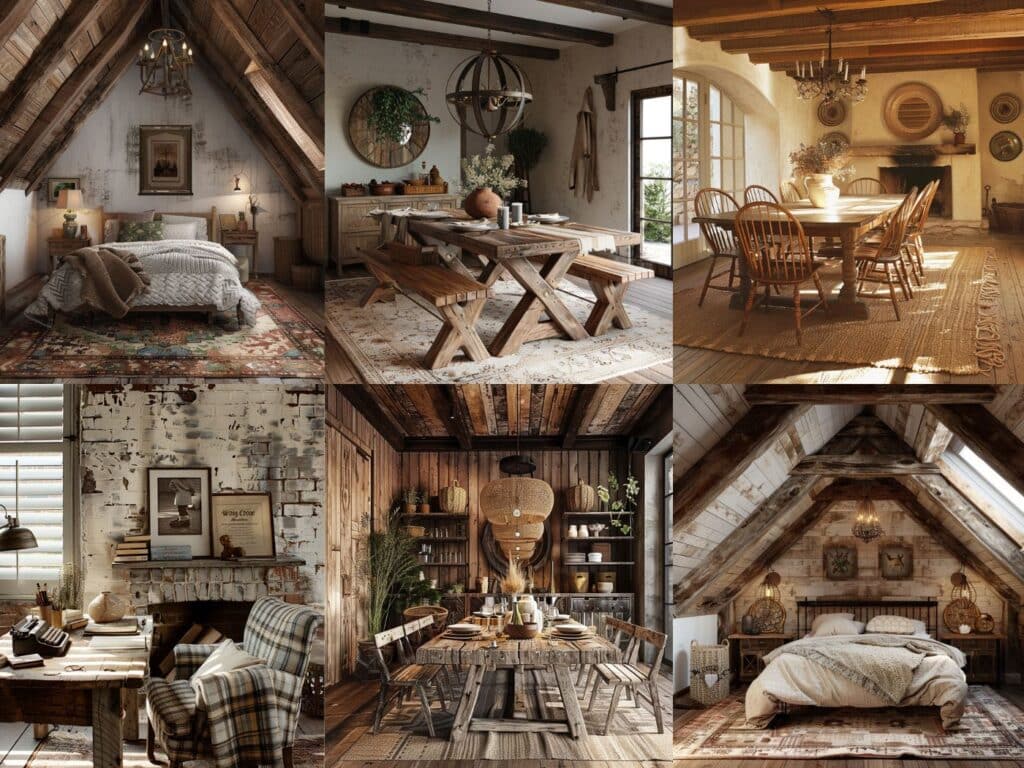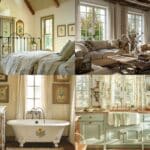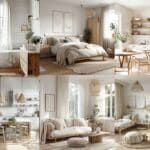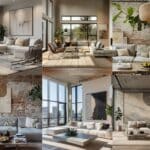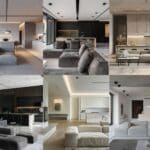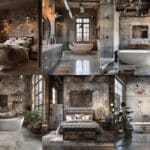Are you yearning for a home that exudes warmth and charm? Rustic interior design may well be just what you’re looking for.
This style captures the essence of cozy, natural living, blending rugged textures with simple, earthy colors. Imagine walking into a space where every element tells a story, from weathered wood beams to handcrafted furniture.
Rustic design isn’t just about aesthetics; it’s about creating a sanctuary that feels inviting and lived-in. Whether you’re redesigning a single room or your entire home, embracing rustic elements can transform your space into a comforting retreat.
Ready to bring the outdoors in and add a touch of timeless elegance to your home? Let’s explore how you can achieve the perfect rustic look.
Top 17 Rustic Interior Design Ideas
#1. Rustic Living Room Interior Design

#2. Rustic Living Room Design

#3. Rustic Living Design

#4. Rustic Interior Design
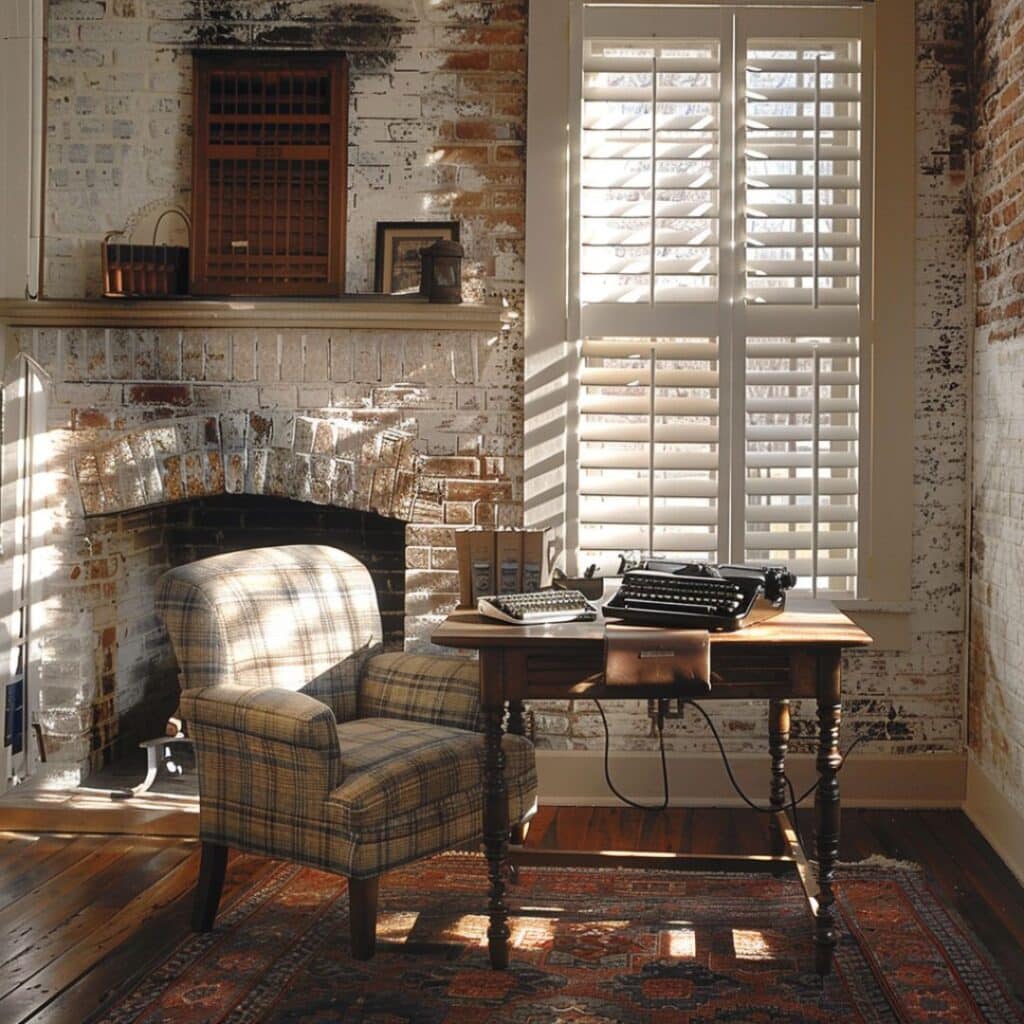
#5. Rustic Dining Room
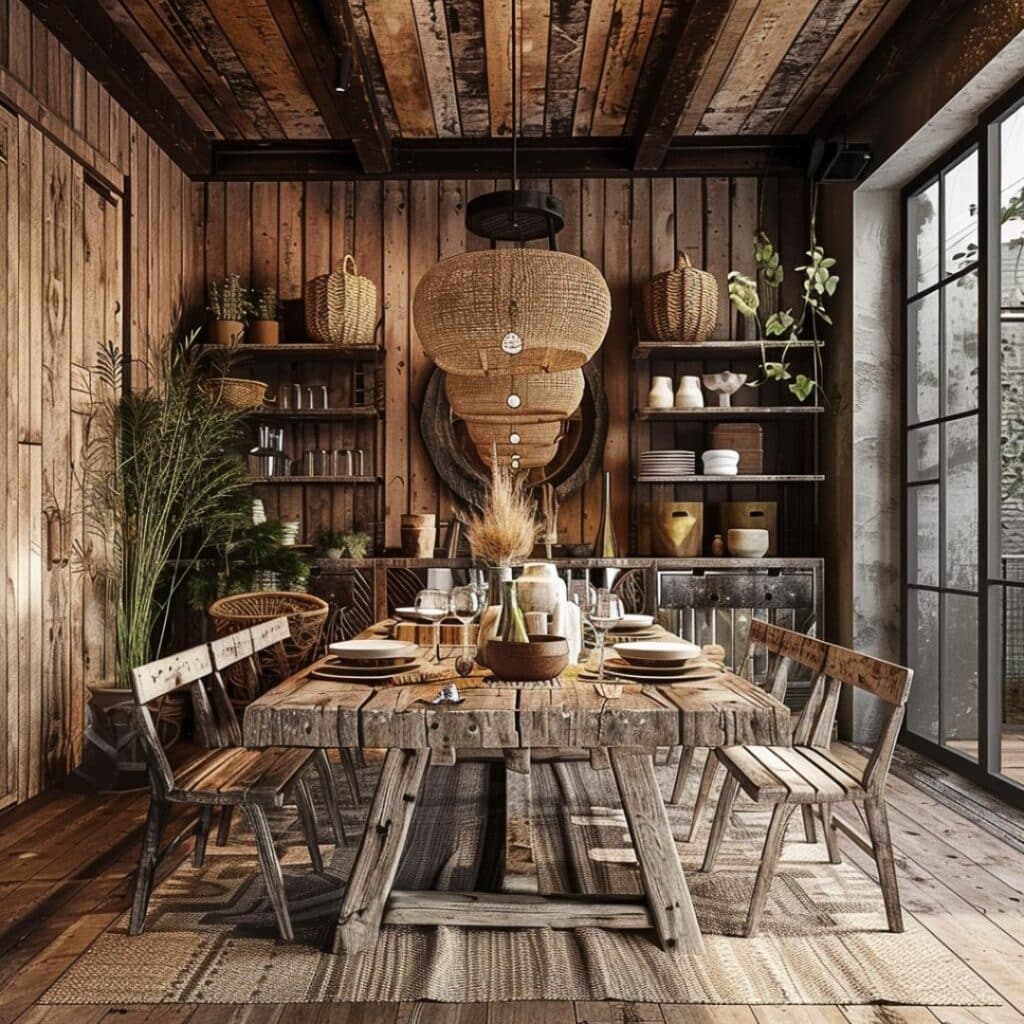
#6. Rustic Dining Room Window
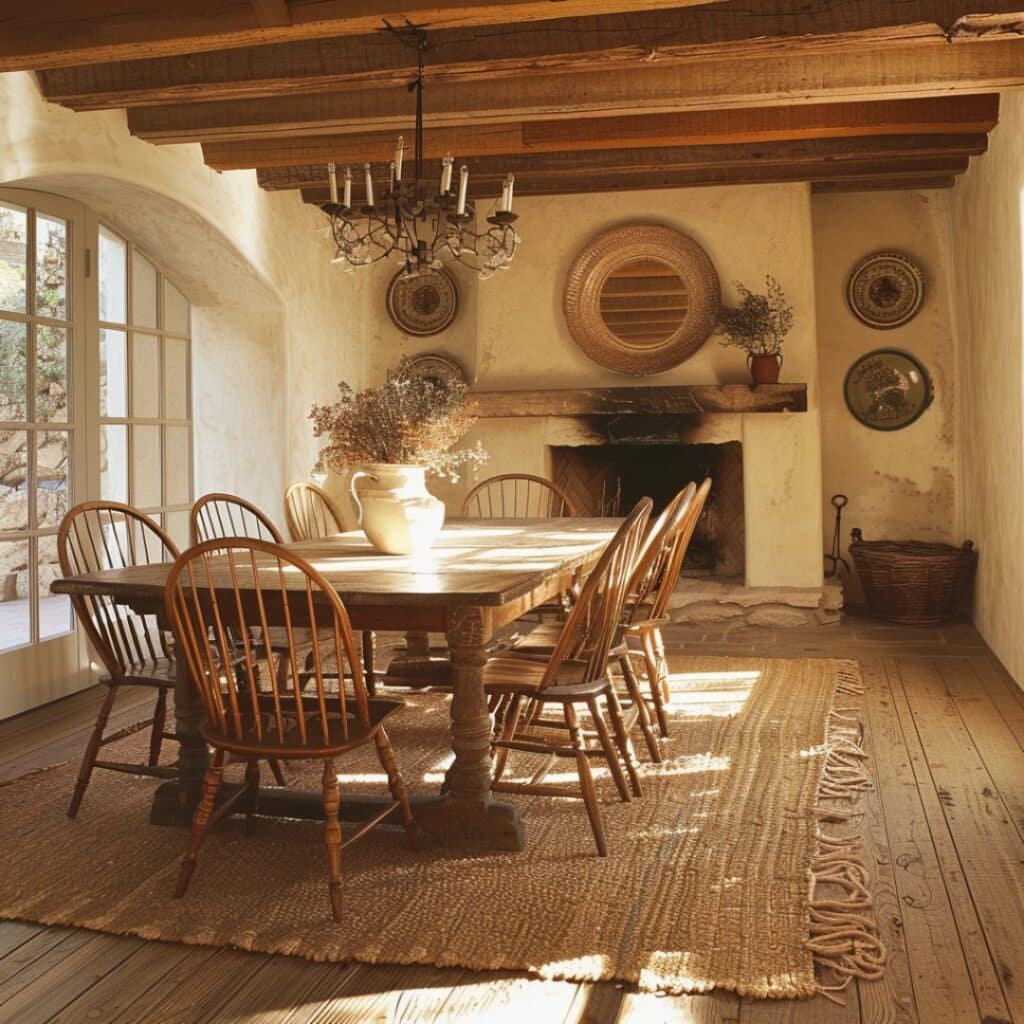
#7. Rustic Dining Room Table
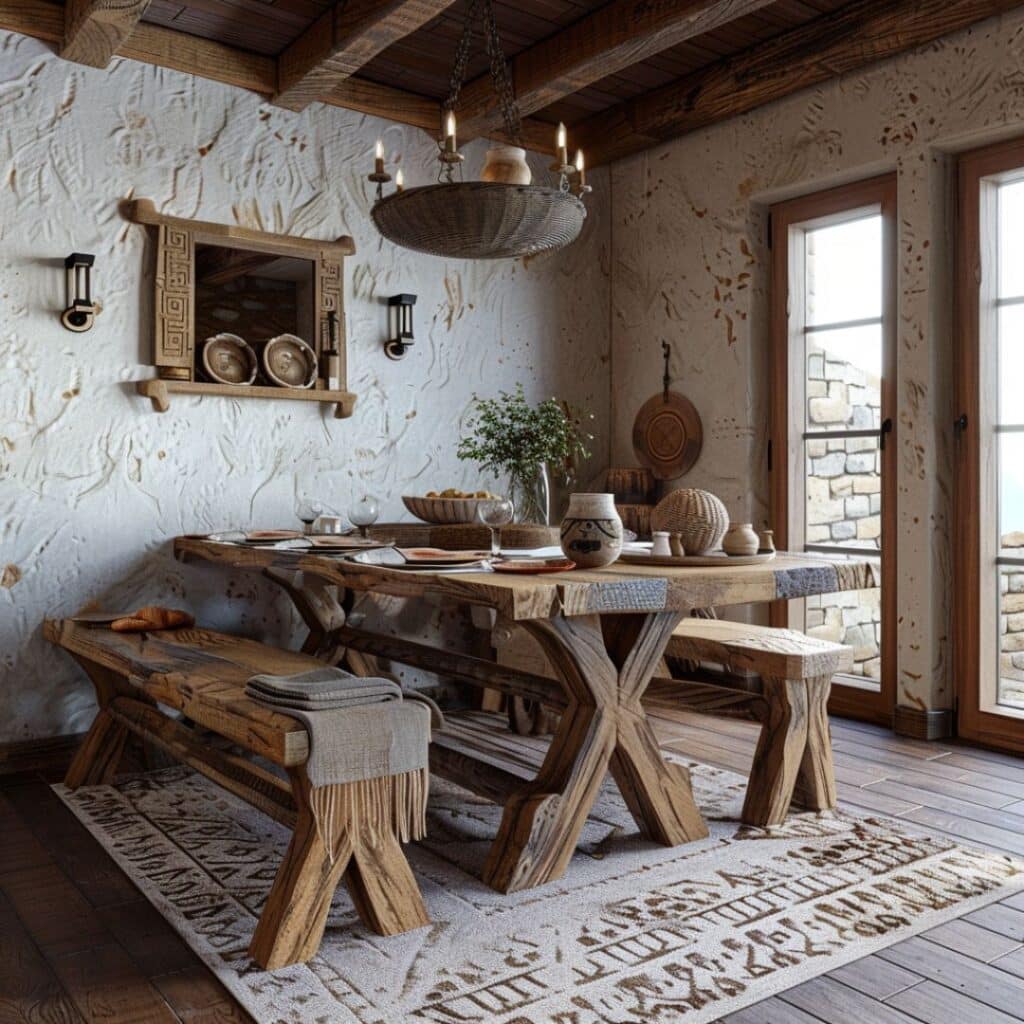
#8. Rustic Dining Room Style
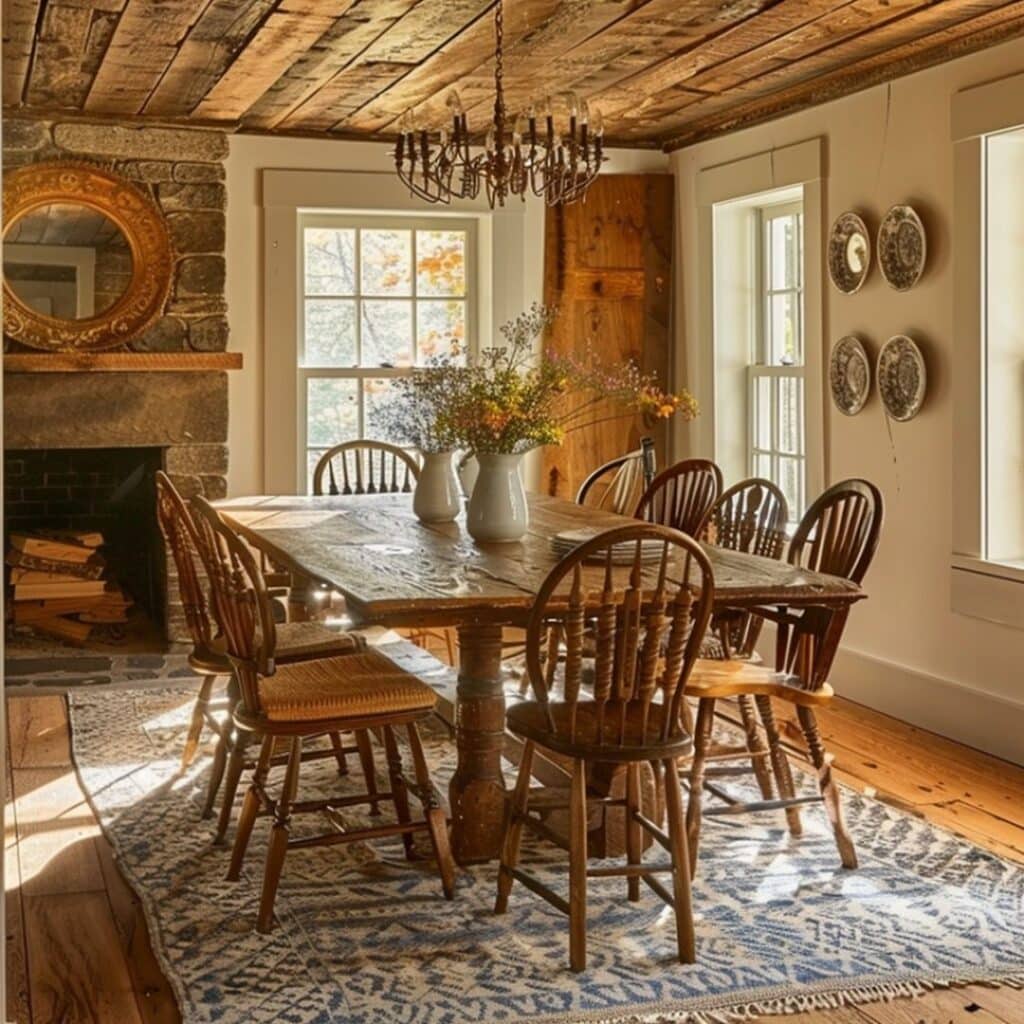
#9. Rustic Dining Room Chairs

#10. Rustic Dining Room Benches
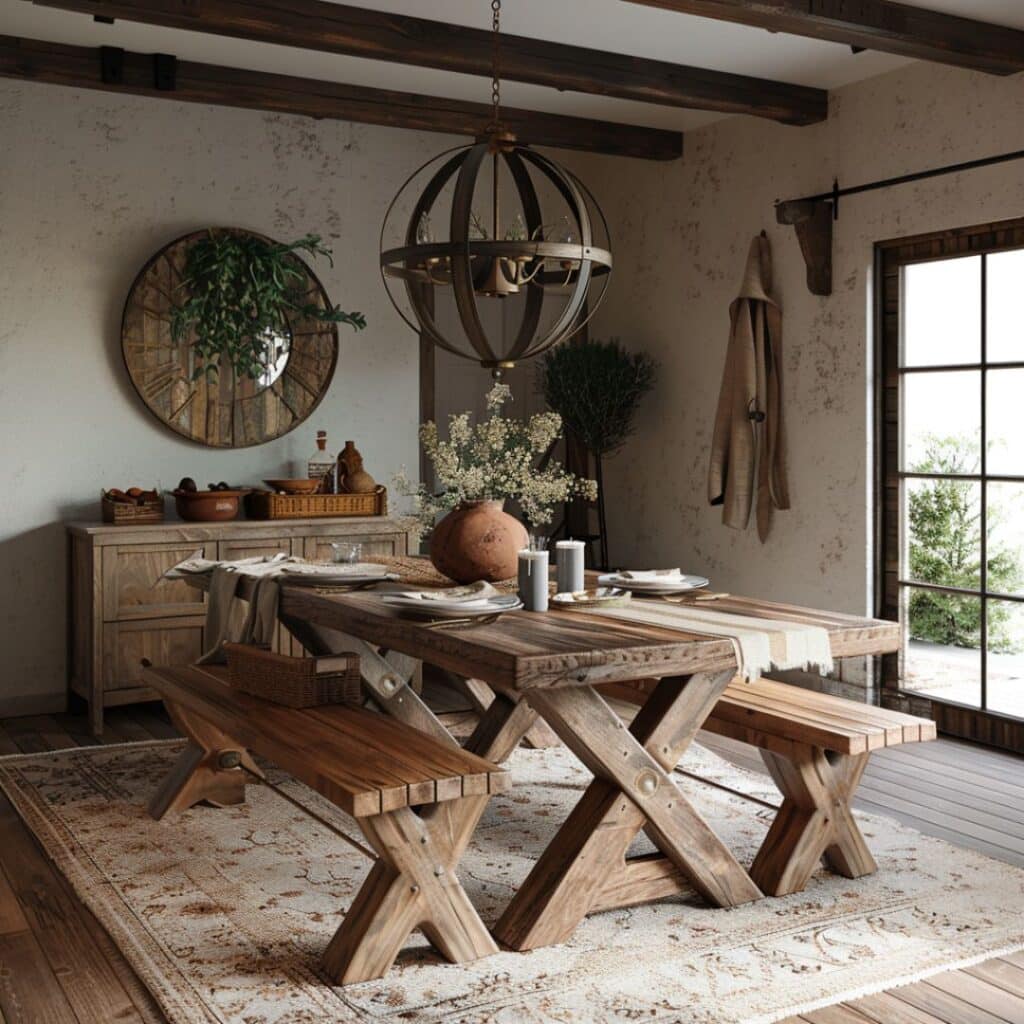
#11. Rustic Bedroom Interior Design
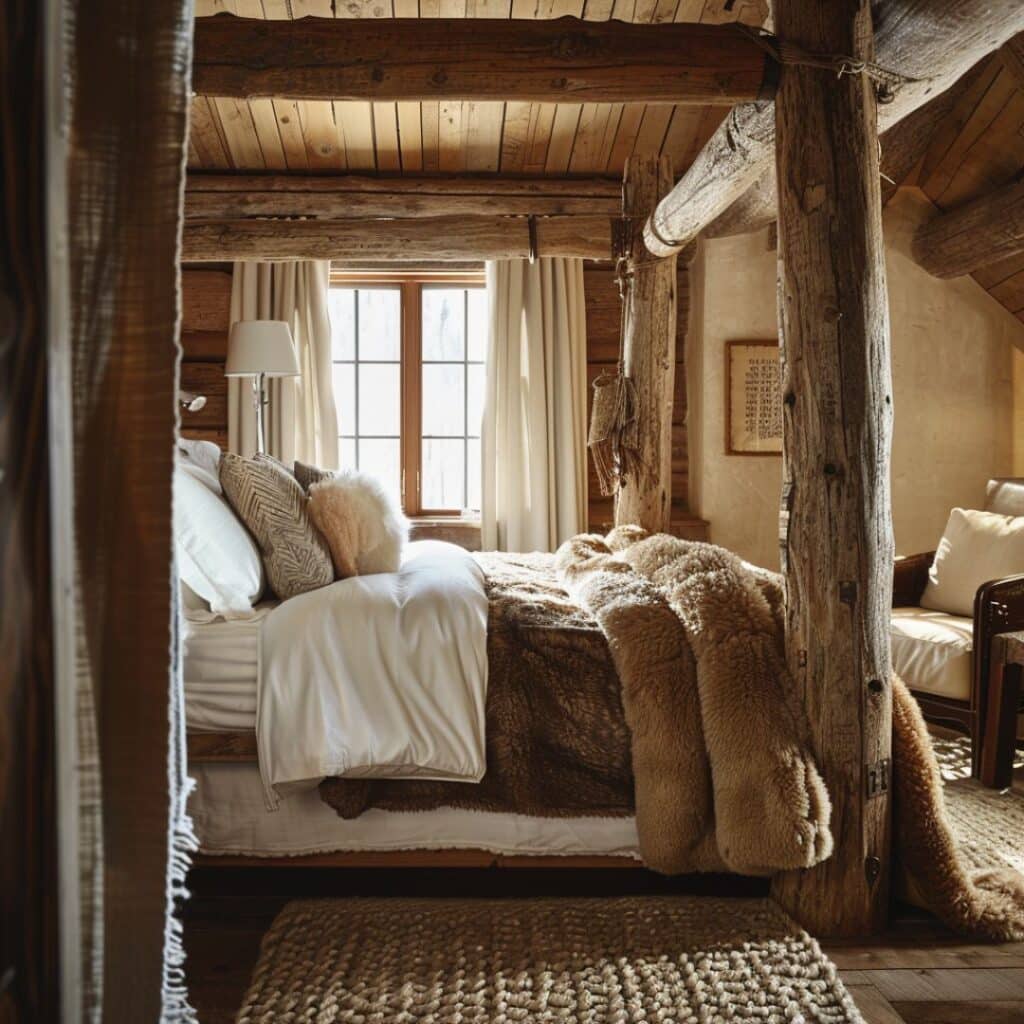
#12. Rustic Bedroom Idea
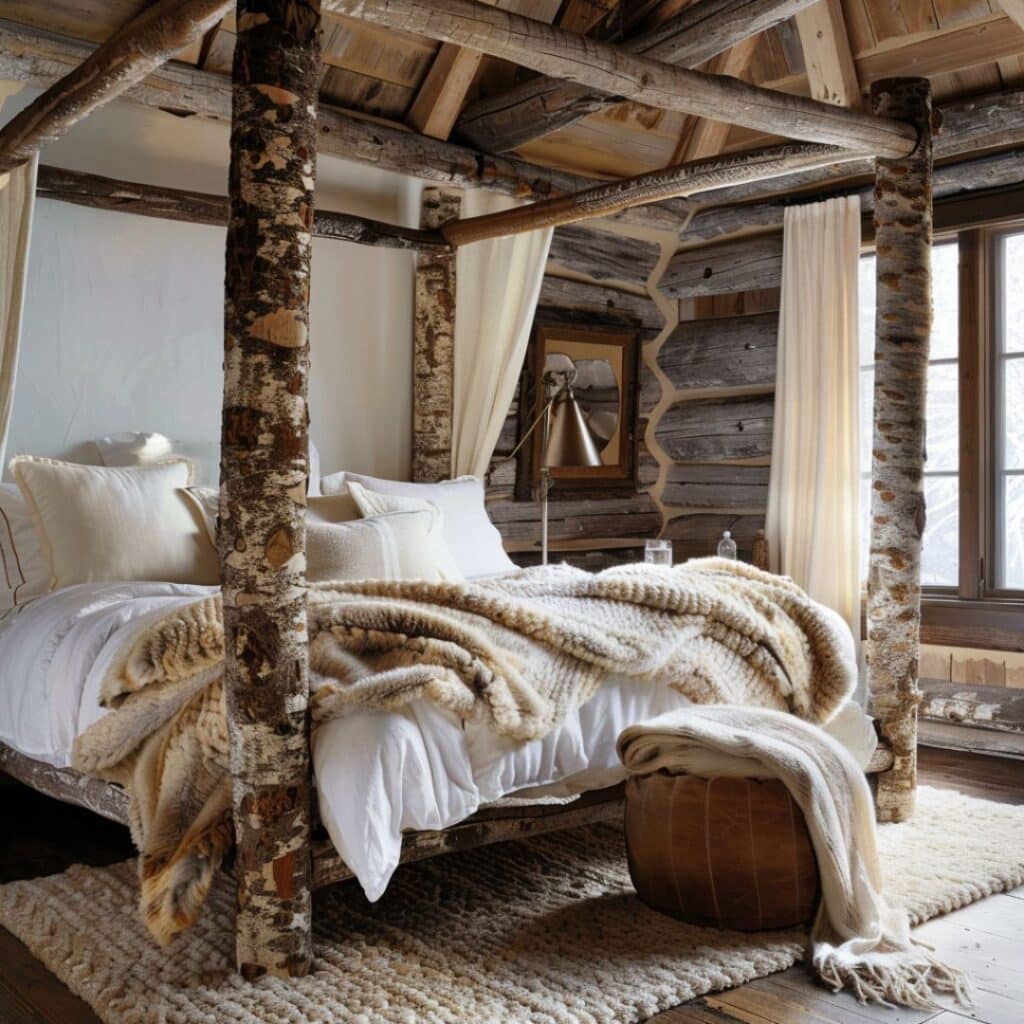
#13. Rustic Attic
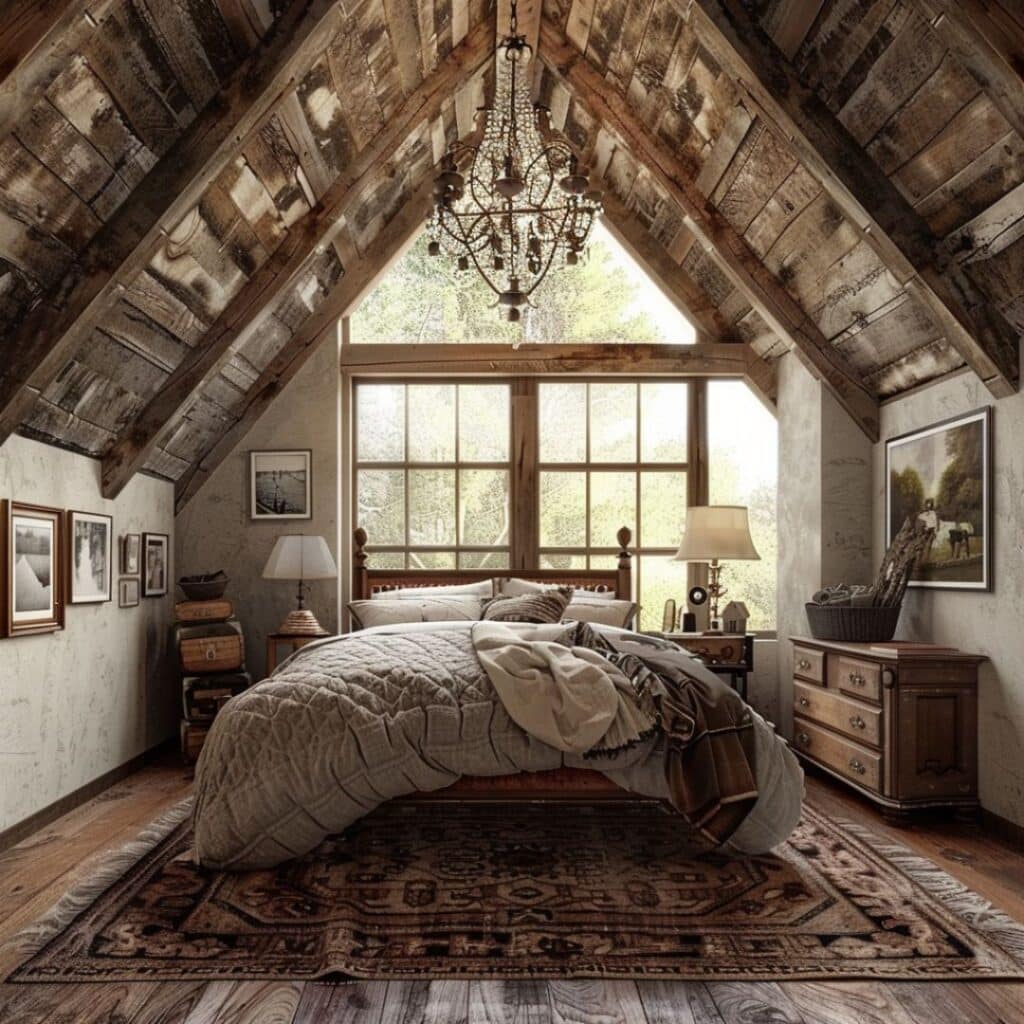
#14. Rustic Attic Window
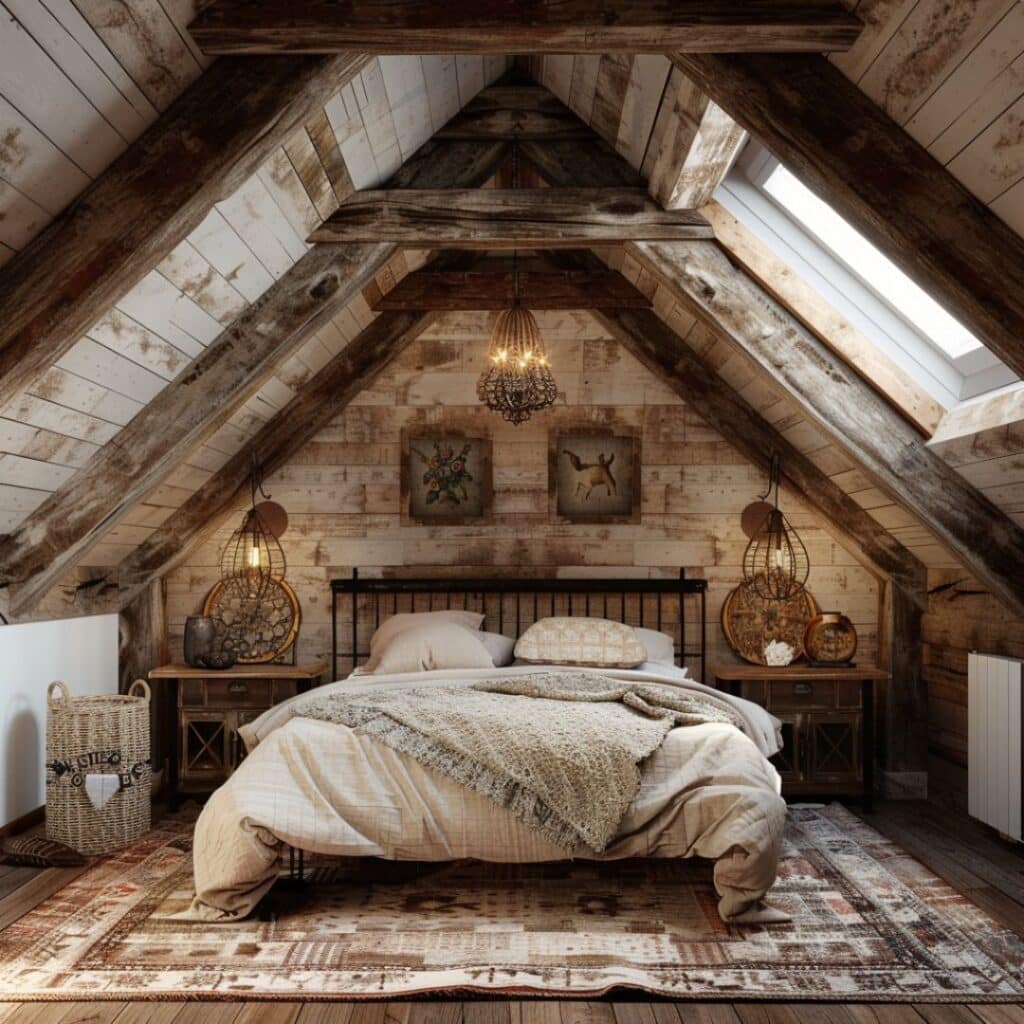
#15. Rustic Attic Decorations
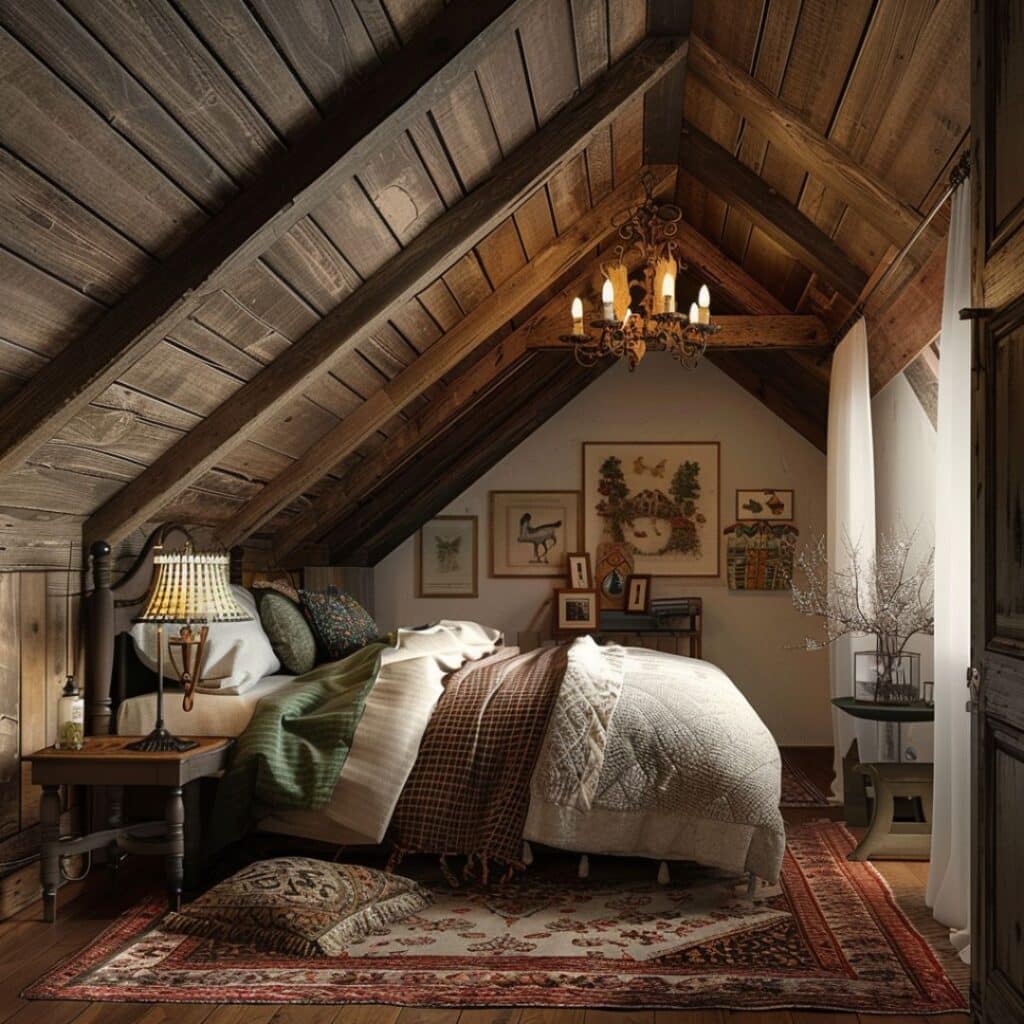
#16. Rustic Attic Bed

#17. Classic Rustic Dining Room
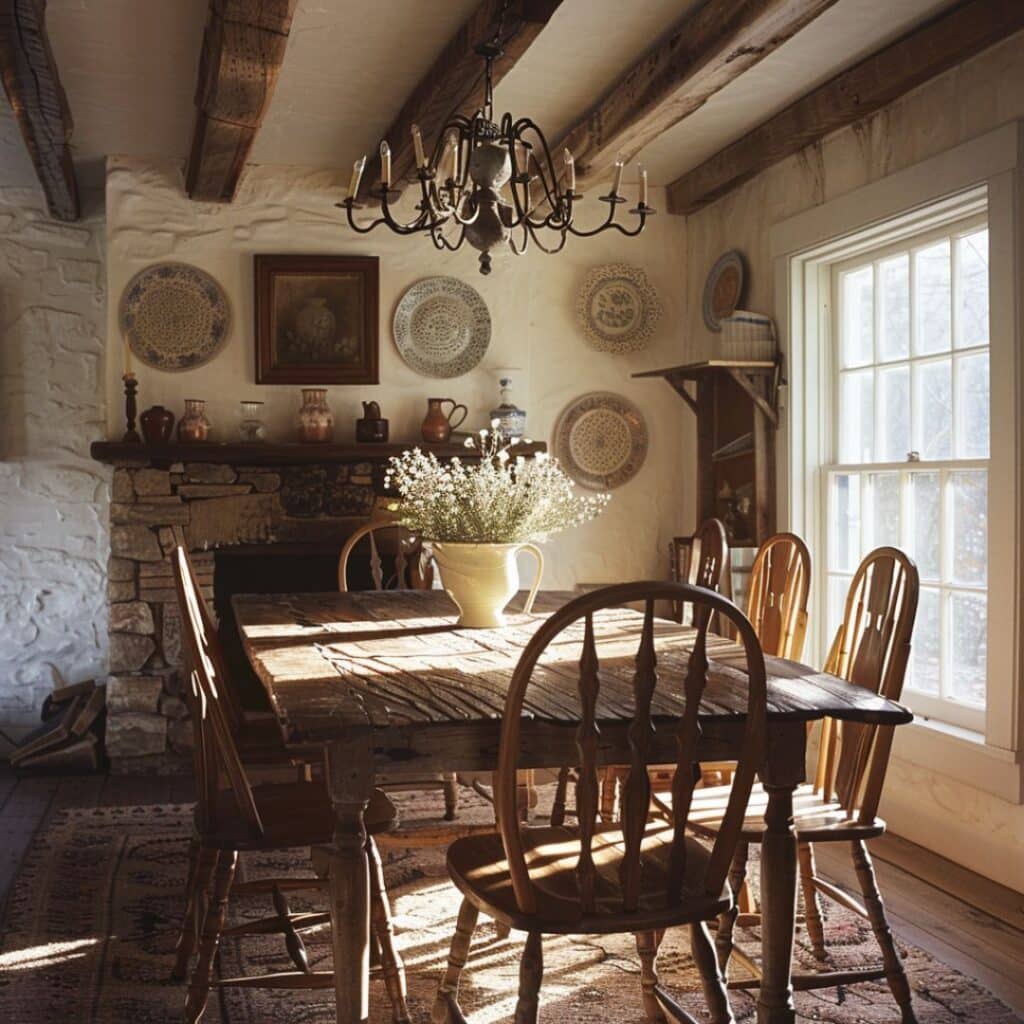
Understanding Rustic Interior Design
Rustic interior design emphasizes authenticity, using natural materials and textures to create cozy, inviting spaces.
Key Characteristics of Rustic Decor
Rustic decor showcases raw wood, often with an unfinished look. Reclaimed wood tables and beams bring natural warmth. Stone accents on walls or floors add rugged charm. Neutral palettes dominate, featuring earthy browns and grays. Textures vary, with burlap, wool, and linen used for fabrics.
Handcrafted items like woven baskets and pottery bring a personal touch. Open shelving displays these elements prominently. Lighting features like wrought iron chandeliers and lantern-style fixtures complete the look.
Origins and Influences
Rooted in the countryside, rustic design draws inspiration from rural homes and old barns. It reflects a simpler, more natural lifestyle. European farmhouses significantly influence rustic aesthetics, with their combination of functionality and charm.
American log cabins also contribute, adding a rugged, handcrafted feel. These origins create a design style focused on comfort and natural beauty.
Main Materials Used in Rustic Design
Rustic design focuses on using natural materials. Here are the primary ones involved.
Wood and Its Variants
Wood plays a significant role in rustic interiors. Reclaimed wood is popular due to its weathered look and sustainability. Various types like oak, pine, and cedar add different textures and tones.
Barn wood is another great option. It’s often used for flooring, walls, or ceiling beams and creates a warm atmosphere. Driftwood, although less common, adds a coastal rustic touch through furniture or decor pieces.
Stone, Metal, and Natural Fabrics
Stone adds a timeless appeal. Granite, limestone, and slate are frequently used for fireplaces, flooring, or accent walls. These materials bring a rugged charm.
Metal elements, such as iron or copper, enhance rustic interiors. Wrought iron fixtures or copper accents complement the raw aesthetic of the design.
Natural fabrics like linen, wool, and burlap provide texture. They are commonly found in upholstery, rugs, and curtains, enhancing the natural, earthy feel of the room. These elements can also be found in Scandinavian interior design, which shares a similar appreciation for natural materials and simplicity.
Colors and Textures in Rustic Design
Earth Tones and Natural Palette
Rustic design heavily features earth tones. Common colors include beige, brown, and green. These hues mimic the natural environment.
Gray and soft whites can add neutrality. They provide a subtle backdrop for other elements. Accent colors like deep red or olive green introduce warmth.
Textural Elements That Define Rustic Spaces
Rough textures are essential in rustic interiors. Exposed wooden beams add character. Stone walls and fireplaces contribute to the rugged ambiance.
Textiles like burlap, wool, and linen enhance the tactile experience. Jute rugs and chunky knit blankets bring further coziness. Each material adds depth and interest.
Key Furniture and Decor Items
Rustic interiors prioritize natural materials and a warm, inviting atmosphere. Practical designs and aged finishes define the style.
Essential Furniture Pieces
Wooden Tables
Solid wood tables form the backbone of rustic design. Look for distressed finishes and sturdy constructions.
Leather Sofas
A leather sofa offers both comfort and durability. Choose rich, earthy tones like cognac or chestnut.
Wooden Beds
A wooden bed frame, especially one made of reclaimed wood, adds a focal point to bedrooms. Include minimal detailing to highlight natural beauty.
Dressers and Cabinets
Opt for sizable, wooden dressers and cabinets. Emphasize storage options that also showcase craftsmanship.
Dining Chairs
Match your wooden table with mix-and-match chairs. Incorporate a blend of different wood types and finishes.
Decorative Accessories
Woven Baskets
Use woven baskets for storage and decor. They’re functional and add textural variety.
Metal Fixtures
Include metal fixtures like wrought iron light fixtures. These contribute to the rustic, rugged look.
Area Rugs
Layer area rugs, focusing on natural fibers such as wool or jute. Patterns should be simple to complement wood textures.
Ceramic Vases
Display ceramic vases on tables or shelves. They bring earthy elements into the space.
Vintage Finds
Enhance character with vintage items like old clocks or framed mirrors. The patina on such pieces adds authenticity.
Keep these elements in mind to perfect a rustic design that feels both welcoming and timeless.
Advantages of Rustic Interior Design
Rustic interior design offers numerous benefits, making it an attractive choice for many. Let’s explore these advantages under specific categories.
Comfort and Warmth
Rustic design naturally creates a cozy environment. Utilizing natural materials like wood and stone fosters a sense of warmth. Adding elements such as plush area rugs and leather furniture enhances comfort. These components make spaces inviting.
Timelessness and Durability
Rustic interiors possess a timeless appeal. Using sturdy materials such as reclaimed wood ensures long-term durability. Furniture and decor items crafted from metal and leather add to longevity. These quality materials withstand the test of time, much like those used in industry interior designs, known for their robustness and functionality.
By incorporating these elements, rustic interior design not only beautifies your home but also provides lasting comfort and elegance. This approach creates a space that remains both stylish and functional for years to come.

